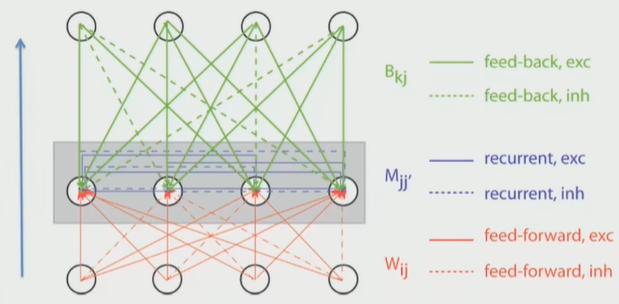1. Neural Circuits
What they want to do?
Learn some algorithm from our brain and translate them into computer code
Some feature of brain-based computations
- work for many decades
- parallel computation
- interaction
How to study brain at different scales
- Large to small: EEG\MEG\PET\Patch Damp
- A central question in neuroscience: what’s the right level of abstraction
Bottom-Up method, first study single neurons. Some model
- filter operation
- integrate-and-fire circuit (easy to implement)
- Hodgkin-Huxley unit
- Multi-compartmental models
- Spines, channels
Circuits

Something like this
Visual system shows an approximately hierarchical architecture.
- V1 part is important
- Timing of the response, latency 50~60ms
- What pathway and Where pathway
First order approximation: immediate recognition
- behavior, we recognize objects within ~150ms
- physiology, visually selective responses to complex shapes within ~150ms
- computation, bottom-up computational models (maybe inspire deep learning)
2. Feedback Signal
2.1. Basic Mechanisms in V1
Feedback signal enhance surround suppression
signals from higher part
visual cortex orientation tuning, there is a Gabor function can describe the system
There are so many models can explain the situation
- feed-forward model
- feed-back? (by cooling v2/v3 cortex) NO
2.2. Visual Search
Tuned feedback signals can instantiate visual search and feature-based attention
to see particular face/color
go through some linear and non-linear computation
- filter 4 orientation
- local max
- filter
- filter
- comparison
3. Questions
Reasons for optimism
- Wiring diagram
- Strength in numbers
- Source code